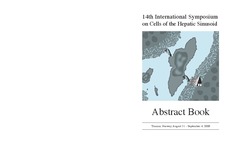| dc.contributor.advisor | Langø, Thomas | |
| dc.contributor.advisor | Sørbye, Sigrunn Holbek | |
| dc.contributor.advisor | Valla, Marit | |
| dc.contributor.advisor | Sorger, Hanne | |
| dc.contributor.author | Pedersen, André | |
| dc.date.accessioned | 2020-10-26T13:28:37Z | |
| dc.date.available | 2020-10-26T13:28:37Z | |
| dc.date.issued | 2019-06-01 | |
| dc.description.abstract | In 2018, cancer was the second leading cause of death worldwide. Early detection can reduce mortality. Screening programs intended for early detection increases the workload for clinicians. To improve efficiency CAD systems would be highly beneficial.
We have developed CAD systems using deep learning, for automatic tissue segmentation and prediction of diagnosis in lung and breast cancer. The first subproject focuses on automatic detection, 3D segmentation and malignancy prediction of lung nodules in CT, and the other aims to design an automatic method for breast tumor segmentation and histological grade prediction.
For lung nodule segmentation, we designed a new 3D-UNet architecture to handle larger input chunks than what is commonly used. Our best model achieved 0.915 recall, 2.9 FPR and 0.813 DSCTP on a subset of the LIDC data set. For malignancy prediction we designed a CNN architecture that achieved a weighted average f1-score of 0.960, only requiring a centroid initialization of the nodule.
We then designed an autoencoder for breast tumor segmentation, and achieved a DSC of 0.895 and 0.881 on two independent data sets. For histological grade prediction, we achieved a weighted average f1-score of 0.824. Using max voting we produced correct classification of 10/12 WSIs. | en_US |
| dc.identifier.uri | https://hdl.handle.net/10037/19673 | |
| dc.language.iso | eng | en_US |
| dc.publisher | UiT Norges arktiske universitet | en_US |
| dc.publisher | UiT The Arctic University of Norway | en_US |
| dc.rights.accessRights | openAccess | en_US |
| dc.rights.holder | Copyright 2019 The Author(s) | |
| dc.rights.uri | https://creativecommons.org/licenses/by-nc-sa/4.0 | en_US |
| dc.rights | Attribution-NonCommercial-ShareAlike 4.0 International (CC BY-NC-SA 4.0) | en_US |
| dc.subject.courseID | STA-3941 | |
| dc.subject | Deep Learning | en_US |
| dc.subject | Computer-aided diagnosis system | en_US |
| dc.subject | Cancer analysis | en_US |
| dc.subject | Machine vision | en_US |
| dc.subject | Medical imaging | en_US |
| dc.subject | Convolutional Neural Networks | en_US |
| dc.subject | VDP::Medical disciplines: 700::Clinical medical disciplines: 750::Oncology: 762 | en_US |
| dc.subject | VDP::Medisinske Fag: 700::Klinisk medisinske fag: 750::Onkologi: 762 | en_US |
| dc.subject | VDP::Technology: 500::Medical technology: 620 | en_US |
| dc.subject | VDP::Teknologi: 500::Medisinsk teknologi: 620 | en_US |
| dc.subject | VDP::Mathematics and natural science: 400::Information and communication science: 420::Simulation, visualization, signal processing, image processing: 429 | en_US |
| dc.subject | VDP::Matematikk og Naturvitenskap: 400::Informasjons- og kommunikasjonsvitenskap: 420::Simulering, visualisering, signalbehandling, bildeanalyse: 429 | en_US |
| dc.title | A Step Towards Deep Learning-based CADs for Cancer Analysis in Medical Imaging | en_US |
| dc.type | Master thesis | en_US |
| dc.type | Mastergradsoppgave | en_US |


 English
English norsk
norsk



